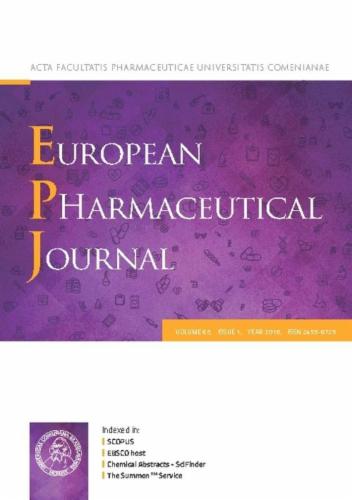Enhanced electrochemical immunosensor utilizing pATA/AuNPs for sensitive detection of the leukemia-associated biomarker CD123 in bone marrow supernatant
IF 4.3
3区 医学
Q1 PHARMACOLOGY & PHARMACY
引用次数: 0
Abstract
Background
Cluster of differentiation 123 (CD123) prominently overexpress in various hematological malignancies and plays a crucial role in diagnosis and prognosis of leukemia. Clinical studies have demonstrated that cell-free CD123 levels also significantly influence leukemia immunotherapy outcomes. The development of novel electrochemical immunosensors addresses the need for point-of-care detection tools, thereby facilitating advancements in clinical monitoring technologies.
Methods
This study presented a practical electrochemical immunosensor constructed using sandwich strategy for CD123 detection based on the modification of gold nanoparticles and poly (2-aminoterephthalic acid). Common proteins and tumor-related biomarkers found in human were selected as interference factors to evaluate the detection specificity of the electrochemical immunosensor. Further, the electrochemical immunosensor was utilized to directly detect CD123 in bone marrow supernatant from leukemia patients.
Results
The constructed electrochemical immunosensor exhibited good linearity for CD123 detection over a range of 0.02 to 2.5 µg/mL, with a detection limit of 12.8 ng/mL, alongside satisfactory specificity and repeatability. Furthermore, the immunosensor was successfully employed to detect CD123 levels in the bone marrow supernatant of leukemia patients, demonstrating results that were highly consistent with those obtained via ELISA.
Conclusions
The developed approach is anticipated to provide robust technical support for the long-term monitoring of leukemia patients during their diagnosis and treatment.

利用pATA/AuNPs的增强型电化学免疫传感器灵敏检测骨髓上清中白血病相关生物标志物CD123。
背景:CD123在多种血液恶性肿瘤中显著过表达,在白血病的诊断和预后中起着至关重要的作用。临床研究表明,无细胞CD123水平也显著影响白血病免疫治疗的结果。新型电化学免疫传感器的开发解决了对即时检测工具的需求,从而促进了临床监测技术的进步。方法:提出了一种基于金纳米粒子和聚2-氨基对苯二甲酸修饰的实用的CD123电化学免疫传感器。选择人体常见蛋白和肿瘤相关生物标志物作为干扰因子,评价电化学免疫传感器的检测特异性。进一步利用电化学免疫传感器直接检测白血病患者骨髓上清液中的CD123。结果:所构建的电化学免疫传感器对CD123的检测在0.02 ~ 2.5µg/mL范围内具有良好的线性关系,检测限为12.8 ng/mL,具有良好的特异性和重复性。此外,该免疫传感器成功用于检测白血病患者骨髓上清液中的CD123水平,结果与ELISA方法高度一致。结论:该方法有望为白血病患者在诊断和治疗期间的长期监测提供强有力的技术支持。
本文章由计算机程序翻译,如有差异,请以英文原文为准。
求助全文
约1分钟内获得全文
求助全文
来源期刊
CiteScore
9.60
自引率
2.20%
发文量
248
审稿时长
50 days
期刊介绍:
The journal publishes research articles, review articles and scientific commentaries on all aspects of the pharmaceutical sciences with emphasis on conceptual novelty and scientific quality. The Editors welcome articles in this multidisciplinary field, with a focus on topics relevant for drug discovery and development.
More specifically, the Journal publishes reports on medicinal chemistry, pharmacology, drug absorption and metabolism, pharmacokinetics and pharmacodynamics, pharmaceutical and biomedical analysis, drug delivery (including gene delivery), drug targeting, pharmaceutical technology, pharmaceutical biotechnology and clinical drug evaluation. The journal will typically not give priority to manuscripts focusing primarily on organic synthesis, natural products, adaptation of analytical approaches, or discussions pertaining to drug policy making.
Scientific commentaries and review articles are generally by invitation only or by consent of the Editors. Proceedings of scientific meetings may be published as special issues or supplements to the Journal.

 求助内容:
求助内容: 应助结果提醒方式:
应助结果提醒方式:


